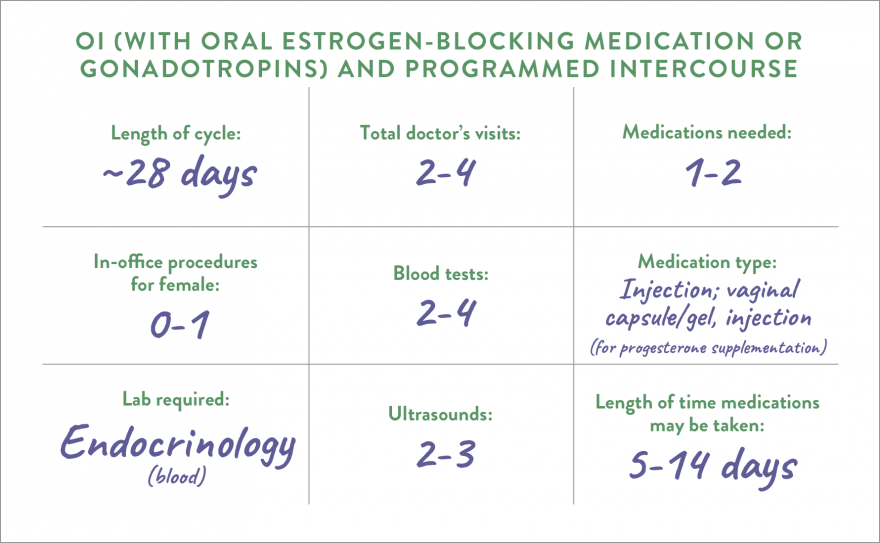Because of the limited life span of the sperm and egg, conception is possible only during about 6 days of each menstrual cycle—the days leading up to and including ovulation, known as the “fertile window.” Tracking ovulation to identify the fertile window, and timing intercourse accordingly, can optimize your chances of conceiving.
Research suggests that pregnancy rates with programmed intercourse are highest when intercourse occurs the day before ovulation. In one study, pregnancy rates were similar whether a couple had intercourse every day, every other day, or every 3 days during the fertile window. The optimal frequency will be what works best for you and your partner.*
When programmed intercourse is combined with ovulation induction (OI), your doctor will monitor the development of follicles and advise when the “fertile window” is in effect.
*Research by the Practice Committee of the American Society for Reproductive Medicine and the Practice Committee of the Society for Reproductive Endocrinology and Infertility, published as “Optimizing natural fertility: a committee opinion" in Fertility and Sterility 2022;117(1).






